Highway traffic noise affects more than 45 million people in the United States
Sound barrier walls have emerged as a pivotal solution for preserving tranquility in residential areas. By harnessing the power of sound physics and innovative designs, these barriers not only enhance residents’ well-being by mitigating noise disturbances but also elevate property values. As urbanization intensifies, integrating sound barriers in community planning offers harmonious solutions for keeping the peace in today’s neighborhoods.
The need for sound barrier walls
According to the United States Environmental Protection Agency more than 45 million Americans live within 300 feet of busy transportation infrastructure. As highway and commuter rail systems continue expanding with the rise in urbanization, increased traffic volumes result in higher levels of traffic noise for residents of adjacent neighborhoods. New residential development typically occurs near roadways or LRT lines because of the ease of traveling to work, school and leisure and shopping activities.
Is noise pollution driving people indoors?
According to a November 14, 2002, article in The Washington Post, “Living in High Style by the Side of a Road,” Americans are willing to accept higher noise levels outdoors in return for convenient access to a highway. At the same time, the role of outdoor activities, which are most affected by highway noise, appears to be shrinking along with the size of backyards. Citing a statistic from the National Association of Home Builders, the author of the article explains that the average size of new single-family homes has grown since 1990, but the average size of lots has shrunk by 12 percent. The article concludes that people are not spending as much time outdoors in their yards; instead, they prefer to have larger houses.
But, as open space for new development becomes scarce, must people simply accept increases in highway traffic noise? Not necessarily. With proper planning of new transportation networks and residential developments using a more balanced approach, it is possible to control noise pollution from highways and rail lines affecting residential neighborhoods.
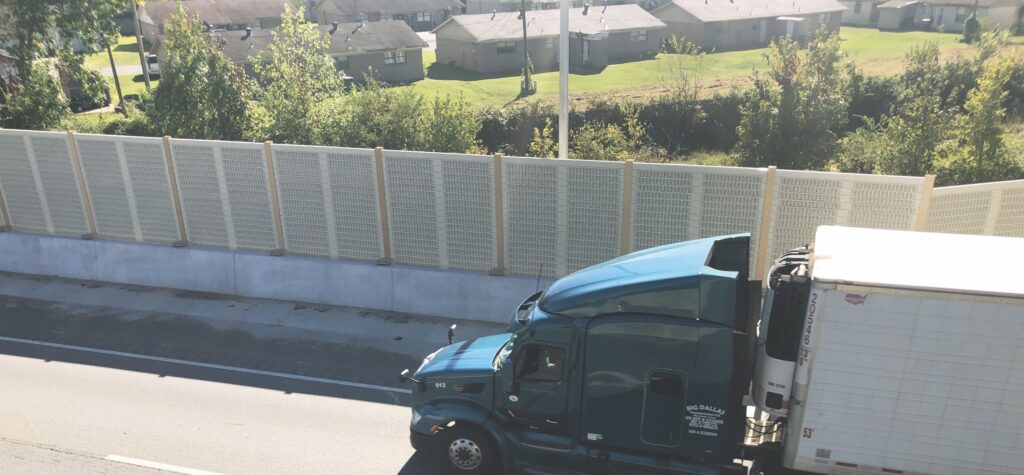
AIL Sound Walls control I-40 noise for residential development in Conway, AR
Benefits of sound wall solutions for residential developments
In a recent New York Times article “Noise Could Take Years Off Your Life. Here’s How.,” a growing body of research demonstrated that this kind of chronic noise is not just annoying. It is a largely unrecognized health threat that is increasing the risk of hypertension, stroke and heart attacks worldwide, including for many millions of Americans.
We’ve all been told to limit the volume on our headphones to protect our hearing. But it is the relentless din of daily life in some places that can have lasting effects throughout the body.
Unmitigated noise pollution can take years off our lives
When researchers in the New York Times article analyzed the brain scans and health records of hundreds of people at Massachusetts General Hospital, they made a stunning discovery: Those who lived in areas with high levels of transportation noise were more likely to have highly activated amygdalas, arterial inflammation and — within five years — major cardiac events. The associations remained even after researchers adjusted for other environmental and behavioral factors that could contribute to poor cardiac health, like air pollution, socioeconomic factors and smoking.
Sound barrier walls offer residents effective relief from noise pollution
Engineered sound barrier wall solutions such as those from AIL Sound Walls can bring relief to residents of developments near busy transportation corridors or other sources of noise pollution. That relief can be manifested in improved sleep quality, reduced stress and improved mental well-being — all of which add up to healthier and happier living.
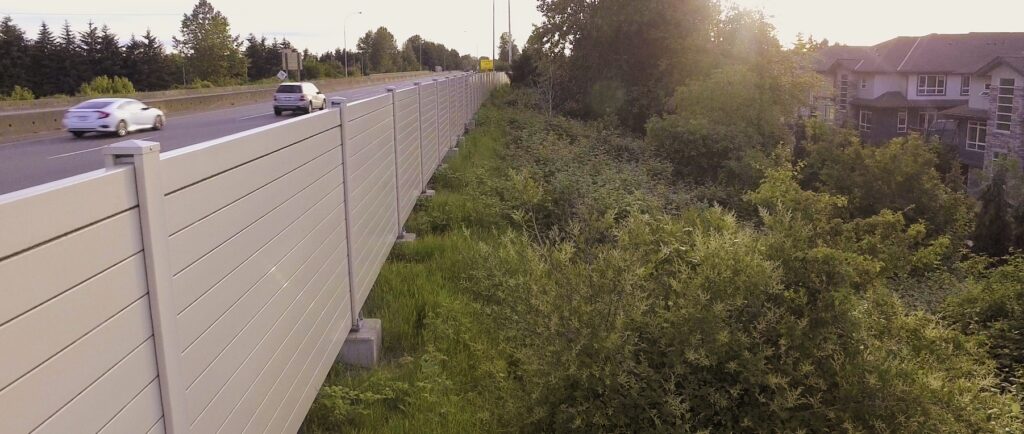
AIL Sound Wall mitigates Highway 91 noise for residential development in Richmond, BC
View Project Profile >
How sound barrier walls work
Sound barriers are not all created equally or for the same purpose. While their installation and uses differ, so do their methods of blocking sound. Generally speaking, all noise barriers reduce sound in one of four ways: absorbing it, transmitting it, reflecting and redirecting it or diffracting it by causing the sound to travel a longer distance and further dissipate over that distance. AIL Sound Walls use either absorption or reflection to mitigate unwanted noise with our Silent Protector (Absorptive) and Tuf-Barrier (Reflective) noise barrier wall systems.
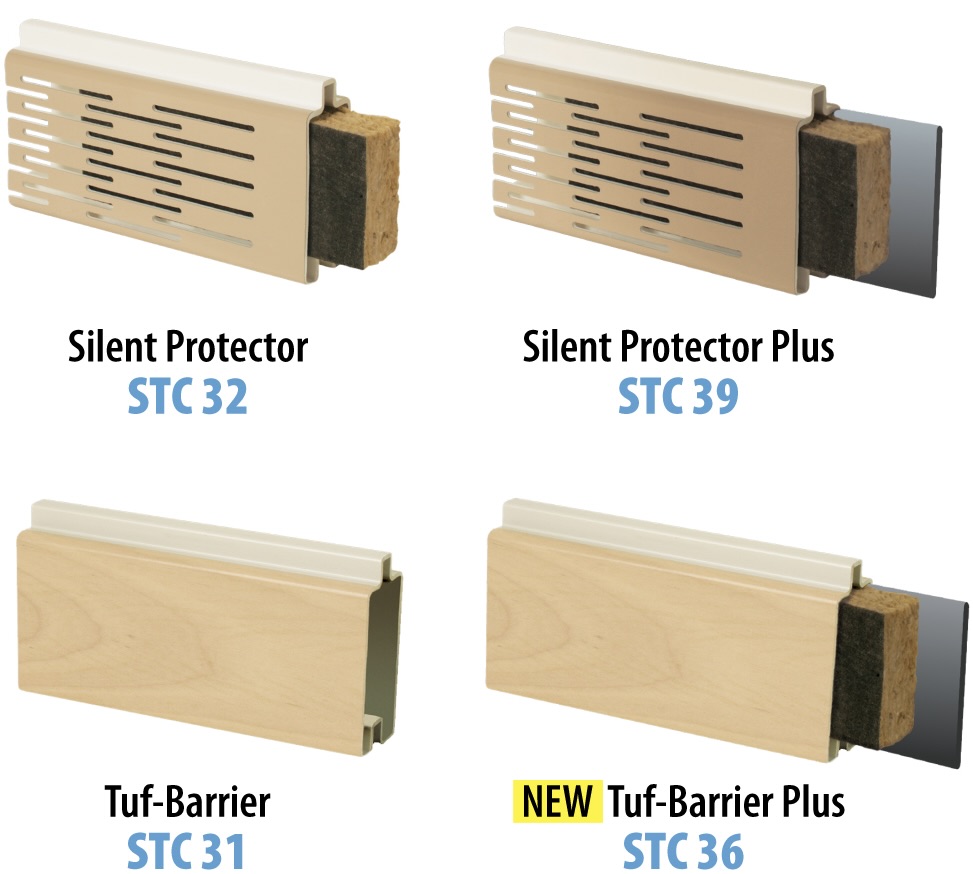
Sound-absorbing barriers
Barriers that absorb sound retain the majority of the sound directed at them, though no absorption barriers are capable of absorbing 100% of noise. Sound absorption levels are measured, rated and recorded in terms of their Noise Reduction Coefficient (NRC). An NRC is calculated using an object’s averaged Sabine Absorption Coefficient (Sab) measurements at 250, 500, 1000 and 2000 hertz (Hz). The Sab is a test that determines the speed of sound decay without the help of any barrier materials. Surprisingly, NRC measurements have a scale from 0 to 1. A rating of 0 indicates that the barrier will reflect all sound directed at it while a rating of 1 indicates that the barrier will absorb all sound. On average, sound absorption barriers have NRC rates between 0.6 and 0.9.
Sound-reflecting barriers
Sound-reflecting barriers have NRC ratings of 0 and literally reflect frequencies back from whence they came. Occasionally, these barriers will direct the frequencies to a different path. These barriers are often found in pairs along stretches of highway backing up to residential areas. They effectively retain the sound within the roadway and reduce frequency transmission and diffraction.
AIL Sound Walls offer efficient noise-control solutions
Independent studies have shown that properties near busy highways or railways protected by an attractive noise barrier wall have a higher value than those that don’t. This allows developers and homeowners to sell residences for higher prices.
AIL Sound Walls can also increase the value of protected properties
If those noise barrier walls are reasonably attractive and well-designed, their aesthetic appeal can further improve the values of the protected properties. AIL Sound Walls offer enhanced aesthetic solutions with a variety of attractive colors and even woodgrain textures and finishes.
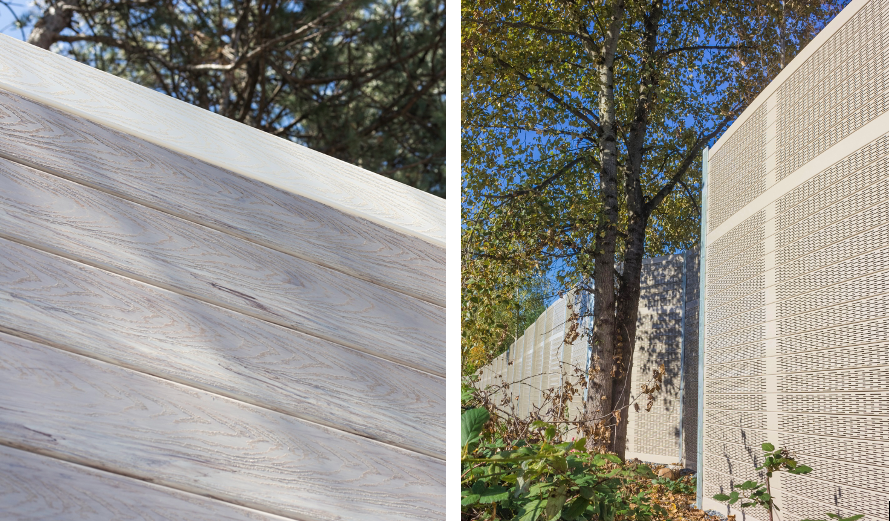
Plus, their lightweight versatility helps them install along tight urban spaces with smaller foundations and less disruption to the landscape. AIL Sound Walls are also easily configured to contour to grade changes and unique geometries. In some cases, they even divert course to accommodate trees.
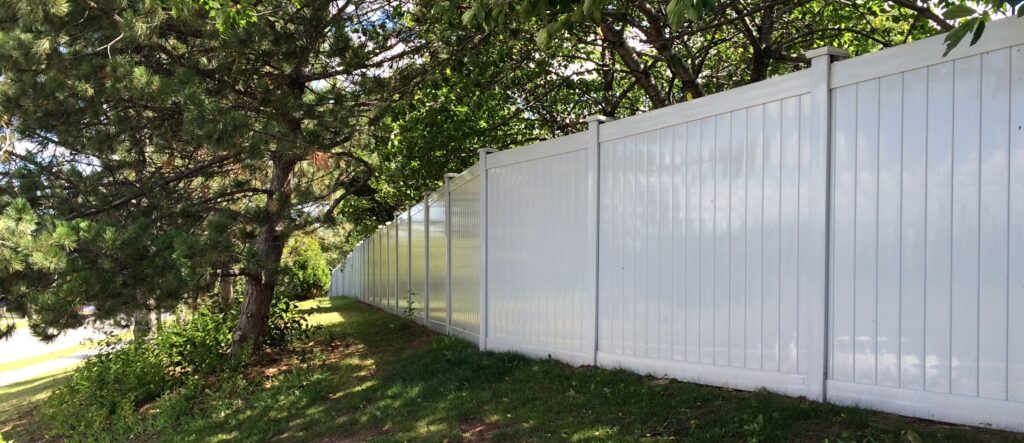
Early sound wall materials were prone to degradation
Early sound walls and enclosures were often made from wood, metal, concrete or other composite materials. Over time, the drawbacks of noise barriers made from these materials became evident as they began to show wear and degradation from weather and other factors. Wood was prone to rot; metal could fall victim to rust; concrete was susceptible to cracking and break-up from repeated freeze/thaw cycles. In fact, many of the earlier sound walls are being replaced today by more sustainable and effective solutions, such as lightweight PVC sound walls.
Lightweight PVC sound barrier walls are long-lasting and sustainable solutions
PVC sound walls like AIL Sound Walls are durable and low-maintenance choices. They’re impervious to rain, snow and ice and are unaffected by de-icing salts. Plus, PVC noise barriers won’t rot, rust or stain. A “greener” solution overall, they’re made from a readily renewable and recyclable product with the highest percentage of recycled material. Their manufacturing process minimizes water consumption and optimizes shipping for reduced CO2 emissions. And the lighter weight of the PVC systems allows for smaller foundations for a better urban land use.
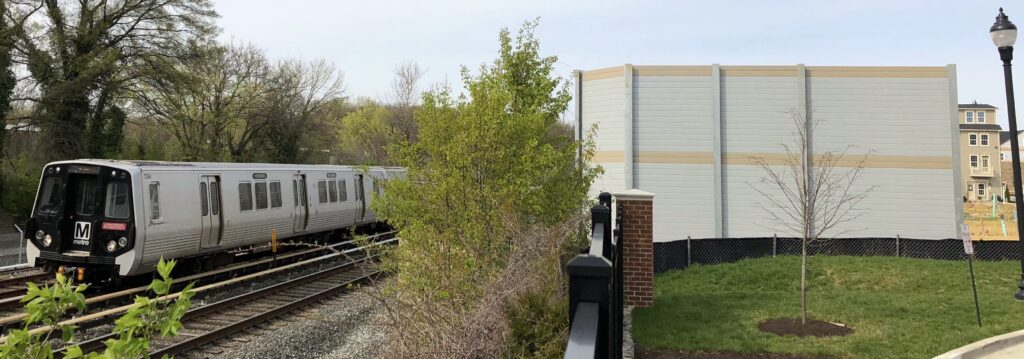
AIL Sound Wall protects residential development from rail noise in College Park, MD
View Project Profile >
AIL Sound Walls provide economical, long-lasting and effective noise-mitigation solutions that improve their bottom lines and keep their residents happy. These lightweight PVC sound barrier wall systems are available in a wide variety of colors and textures to enhance the architectural style of any development.

AIL Sound Wall mitigates I-95 highway noise for residential development in Lorton, VA
View Project Profile >
AIL Sound Walls can be the solution for residential developments. With extensive options for PVC panels and sound walls, AIL has a solution for every residential development project. From highway noise to loud utilities, AIL Sound Walls are cost effective and flexible.
There’s an AIL Sound Walls specialist ready to help you value engineer a better solution for your sound-mitigation project — and the sooner they get involved in the process, the more you may save. Call toll-free 1-866-231-7867 to get started.






